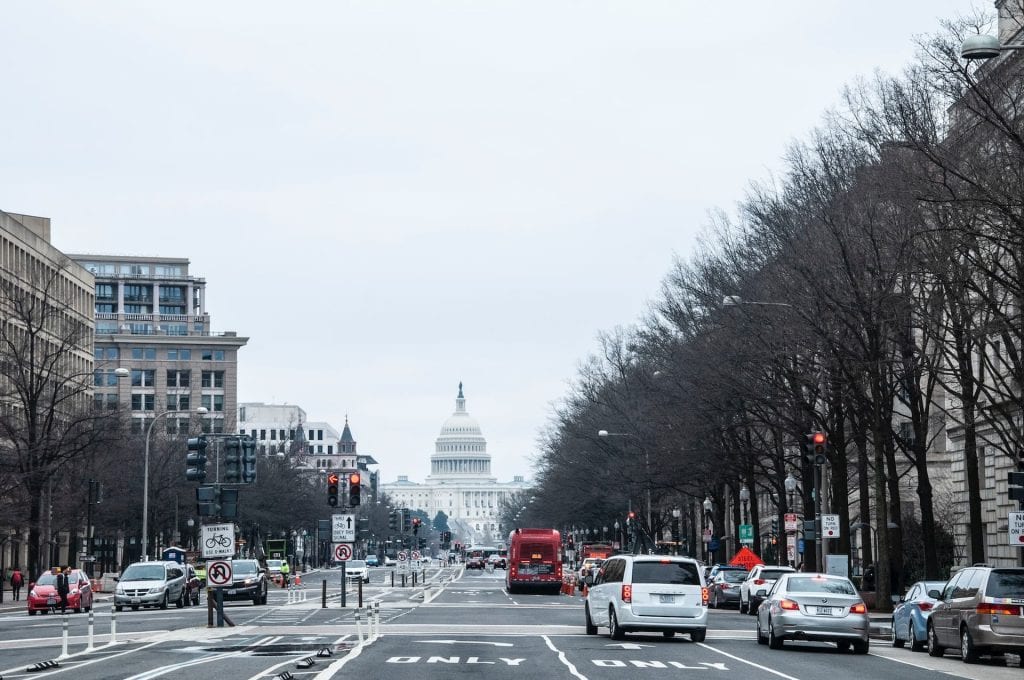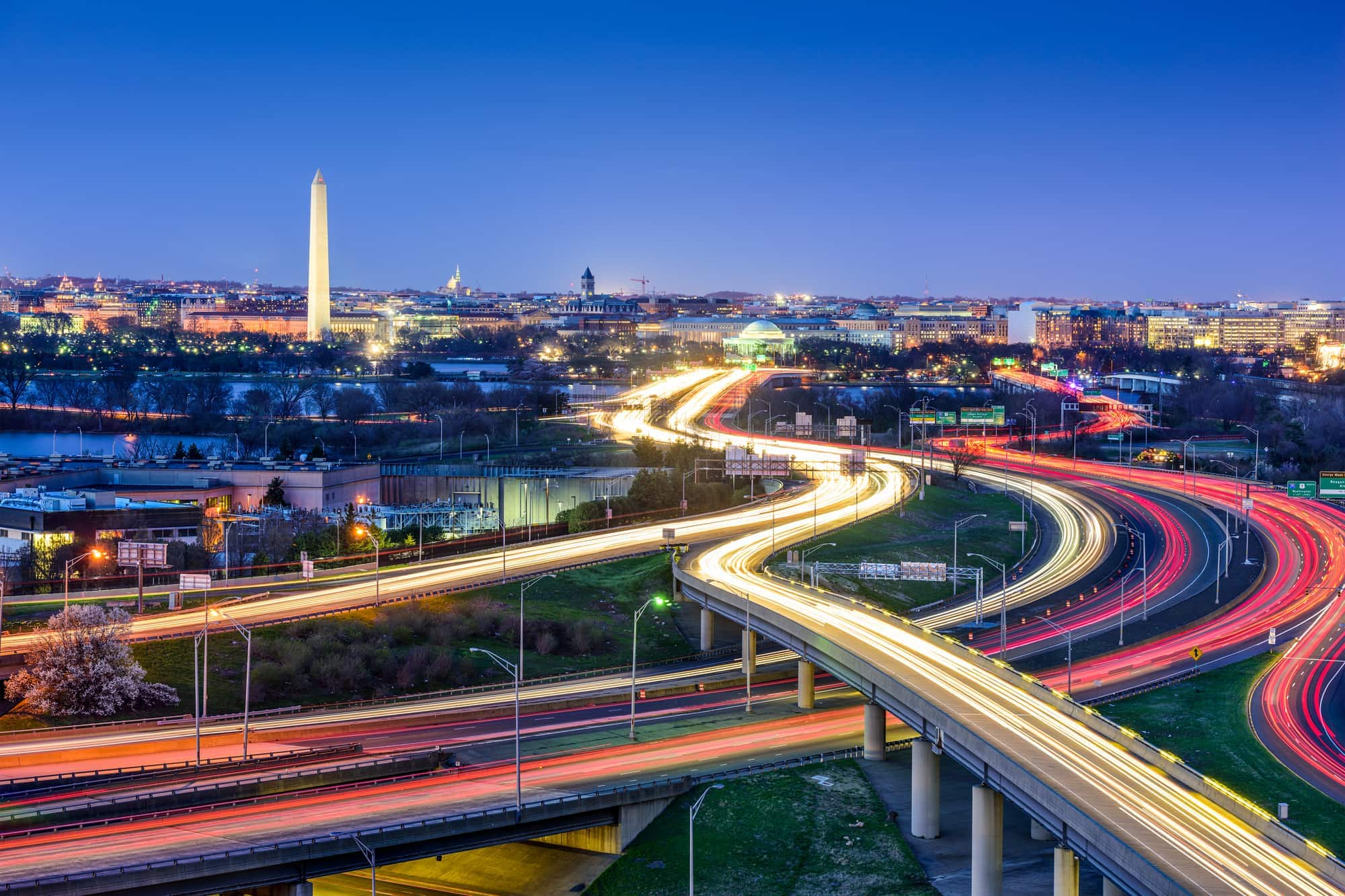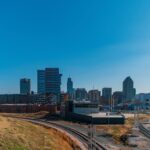Washington, DC, is a unique city with a rich history and cultural diversity, making it an appealing destination for those considering a move. However, moving to a new city can be daunting, especially when you need to become more familiar with the area.
That’s why we have created this comprehensive guide to help make your move to Washington, DC, as smooth as possible.
In this article, we will cover everything you need to know, from the cost of living and housing market to transportation and local culture, ensuring you have all the information you need to make an informed decision about moving to Washington, DC. So, if you are considering relocating to the nation’s capital, keep reading!
12 Things You Need to Know Before Moving to Washington, DC
Washington, DC, is a vibrant city that boasts numerous attractions, historic landmarks, and cultural diversity. Whether you are moving to Washington, DC, for work or looking for a change of pace, it’s essential to be prepared for what lies ahead. Here are 12 things you need to know before moving to Washington D.C.:
The Cost of Living Is High
The cost of living in Washington D.C., is above the national average, so you must be prepared for the expenses you will encounter. According to Numbeo, a website that aggregates cost of living data from around the world, the cost of living index in Washington D.C. is 165.56, with the most significant expenses being housing, transportation, and groceries.
Housing is by far the most significant expense in Washington D.C. The average cost of a one-bedroom apartment in the city center is around $2,300 per month, and a three-bedroom apartment costs upwards of $4,500 per month. Outside of the city center, rent prices are slightly lower but still expensive. If you’re considering buying a home in Washington, DC, the median home value in the city is $636K.
Transportation costs in Washington D.C. are also high, with a monthly metro pass costing around $81 and ride-sharing services like Uber and Lyft charging premium rates due to the city’s congestion. The cost of gas is also higher than the national average, with the average price per gallon around $3.20, according to GasBuddy.
The cost of groceries and dining out in Washington D.C., is also significant, with groceries being around 26% higher than the national average, according to Numbeo. Eating out can also add up quickly, with the average cost of a meal at a mid-range restaurant being around $60 for two people.
Even though Washington DC is considered an expensive city, the District of Columbia ranks high in purchasing power, with an index of 123.44 according to Numbeo.
There Is a Robust Public Transportation System

One of the benefits of living in Washington D.C., is the city’s robust public transportation system, which can save residents time and money compared to driving. The Washington Metropolitan Area Transit Authority (WMATA) operates the city’s bus and metro system, with a network of buses and six metro lines that serve the city and surrounding suburbs.
The metro system is particularly useful for commuters, with trains running from early morning to late at night and frequent service during peak hours. The metro is also cost-effective, with fares depending on the distance traveled and discounted rates for students, seniors, and disabled riders.
WMATA operates over 300 routes throughout the city and surrounding areas for those who prefer to travel by bus. The bus system is handy for accessing areas not served by the metro, and many bus routes operate late into the evening and on weekends.
Another transportation option that has become increasingly popular in DC is bike-sharing. Capital Bikeshare is a bike-sharing service that allows riders to rent bikes from stations throughout the city, with many bike lanes and trails available for cyclists.
DC Is Also a Very Walkable City
Washington, DC, is not only a city with a robust public transportation system but also highly walkable, with many of its distinct neighborhoods offering easy access to shops, restaurants, and other amenities. The city’s compact size and grid-like street layout make it easy to navigate on foot, and many residents choose to walk or bike to work or other destinations. The walk score for Washington, DC, is 98 out of 100.
Many of the city’s most iconic landmarks and attractions are also easily accessible by foot, including the National Mall, Smithsonian museums, and the monuments and memorials that dot the cityscape. Walking tours are a popular way to explore the city, with many tour companies offering guided walks that provide a deeper understanding of DC’s rich history and culture.
The walkability of DC can also have health benefits for residents, with walking being a low-impact exercise that can help maintain cardiovascular health and improve overall well-being. Walking can also reduce stress and improve mood, making it an ideal way to explore the city and enjoy its sights and sounds.
Traffic Can Be Unforgiving
While DC has excellent public transit and is highly walkable, traffic can still be a significant challenge for commuters. The city’s growing population, narrow streets, and gridlock-prone intersections can make commuting by car frustrating and time-consuming, especially during rush hour.
Washington, DC, consistently ranks as one of the most congested cities in the country, with commuters spending an average of 155 hours per year stuck in traffic, according to a recent study by the Texas A&M Transportation Institute.
To address the issue of traffic congestion in DC, there have been several efforts in recent years to improve transportation infrastructure and encourage alternative modes of transportation. For example, the District Department of Transportation (DDOT) has implemented several initiatives to improve traffic flow, such as using adaptive traffic signals that adjust in real-time based on traffic conditions.
DDOT has also invested in expanding bike lanes and developing new bike-sharing programs, which can help reduce traffic congestion by encouraging more people to bike to work or other destinations. In addition, the city has implemented car-sharing programs like Zipcar and Car2Go, which allow residents to rent cars on a short-term basis, reducing the need for car ownership and decreasing traffic congestion.
Healthcare in Washington, DC

Healthcare in Washington, DC, is of high quality, with many hospitals and medical facilities available throughout the city. Some of the top hospitals in DC include:
- MedStar Washington Hospital Center
- George Washington University Hospital
- Children’s National Hospital.
These hospitals offer a range of specialized care, including cancer treatment, neurology, and pediatrics, among others. Additionally, DC has a strong network of primary care providers, specialists, and community health centers to meet the needs of residents.
One unique aspect of healthcare in DC is the presence of federal health programs, such as the Veterans Affairs Medical Center and the National Institutes of Health. These institutions provide cutting-edge research and medical services to residents and visitors worldwide. Furthermore, many healthcare providers in DC accept Medicaid, a federal healthcare program for low-income individuals and families.
In recent years, DC has made significant progress in expanding access to healthcare for underserved communities. The city has invested in community health centers, which provide affordable and comprehensive care to residents regardless of their ability to pay. DC also offers a healthcare exchange where individuals and families can purchase affordable health insurance plans. Additionally, the city has implemented several initiatives to address healthcare disparities and promote health equity.
History Is Prized
 Washington, DC, is home to some of the most important museums and historical landmarks in the United States, many of which are freely accessible to the public. The Smithsonian Institution, for example, is a network of 19 museums, galleries, and research facilities that include:
Washington, DC, is home to some of the most important museums and historical landmarks in the United States, many of which are freely accessible to the public. The Smithsonian Institution, for example, is a network of 19 museums, galleries, and research facilities that include:
- The National Museum of American History
- The National Air and Space Museum
- The National Museum of African American History and Culture.
The Smithsonian Museums offer a wealth of exhibits and collections that showcase the history, culture, and achievements of the United States and the world. They are a significant draw for tourists and locals alike. The museums are also free to visit, which makes them accessible to everyone.
In addition to the Smithsonian museums, DC is home to several other notable museums and historical sites, such as the United States Holocaust Memorial Museum, the National Archives, and the National Portrait Gallery. These museums offer a more focused look at specific aspects of history and culture; many are also free to visit.
For history buffs or anyone interested in learning more about the rich history and culture of the United States, the Washington DC museums and historical sites offer a wealth of opportunities for exploration and discovery. And with so many of these institutions offering free admission, there’s no reason not to take advantage of everything they offer.
Music and Art Lovers Adore DC
Washington DC, is home to a thriving arts and music scene, with various venues and events catering to all tastes and interests. One of the most iconic music venues in the city is the 9:30 Club, which has been a staple of the DC music scene for over 40 years. The Club has hosted some of the biggest names in music, from Nirvana to Adele, and is known for its intimate atmosphere and top-notch sound system.
In addition to the 9:30 Club, DC is also home to several other notable music venues, such as the Lincoln Theatre, the Anthem, and the Black Cat, which all host a wide range of live music events throughout the year. The city also has several outdoor music festivals, such as the DC Jazz Festival and the Capital Fringe Festival, which feature a variety of performances and events in venues throughout the city.
DC’s arts scene is equally vibrant, with several world-class museums and galleries showcasing a range of styles and genres. The Smithsonian American Art Museum, for example, houses one of the world’s largest collections of American art. At the same time, the National Museum of Women in the Arts celebrates the contributions of women artists throughout history. The city is also home to several independent galleries and art spaces, such as the Hillyer Art Space and the Hamiltonian Gallery, which showcase the work of emerging and established artists from DC and beyond.
Be Prepared for Disruption
As the capital of the United States, Washington, DC, is often the site of political protests, rallies, and demonstrations. While these events are generally peaceful, they can sometimes cause disruptions to daily life in the city, so take this into account if you’re considering moving to Washington DC. In addition, DC is also subject to government shutdowns, which can further complicate matters for residents and visitors alike.
During political protests, traffic and public transportation can be severely impacted, and some businesses may choose to close for the day. It’s essential to stay aware of any planned demonstrations and rallies, as well as any potential counter-protests or law enforcement activities that may result. Residents and visitors should also be mindful of the possibility of temporary road closures, security checkpoints, and other disruptions near government buildings and landmarks.
Government shutdowns can also have a significant impact on day-to-day activities in DC. During a shutdown, many federal government employees are furloughed or forced to work without pay, reducing services and longer wait times for government-related services. In addition, some tourist attractions and national parks may be closed or have limited hours during a shutdown.
While disruptions due to political protests and government shutdowns are not regular, it’s essential to be prepared and stay informed of any potential impacts on daily life in DC. Keeping current with local news sources, monitoring traffic and transportation updates, and planning can help mitigate disruptions in your everyday life.
Jobs and Employment in DC

Washington, DC, offers diverse job opportunities across various industries, making it a popular destination for job seekers. The federal government is the largest employer in the city, with agencies such as the Department of Defense, Department of Health and Human Services, and the Department of Homeland Security based in DC. Many non-governmental organizations, including international organizations like the World Bank and International Monetary Fund, are also in this beautiful city.
The city is also home to a thriving tech industry, with companies such as Amazon, Google, and Microsoft having a significant presence there. Other industries that are well represented in DC include healthcare, education, and hospitality. DC’s economy is also fueled by tourism, as millions of visitors flock to the city each year to visit the numerous historical sites and museums.
While the job market in DC is competitive, it offers many opportunities for those with a wide range of skill sets and experience levels. The city also has a strong network of professional organizations, job placement agencies, and networking groups that can help job seekers connect with potential employers. Additionally, many universities and colleges, like Howard University, George Washington University, and University of the District of Columbia in the area offer job fairs and career services to their students and alums.
Taxes May Get Confusing
Taxes in Washington, DC, can be confusing, especially for those unfamiliar with the city’s unique tax laws and regulations. In addition to federal taxes, residents of DC are also subject to state and local taxes, which can impact overall tax liability.
One of the main differences in DC tax laws is that the city does not have a sales tax but instead a sales tax-like “use tax” on out-of-state purchases used within the city. Residents who purchase goods online or from other states and use them within DC may be subject to this use tax. In addition, DC residents are subject to a personal income tax, which ranges from 4% to 8.95% based on income.
Another potential complication for DC residents is that the city operates on a fiscal year from October 1 to September 30 rather than the traditional calendar year. This can impact tax filing deadlines and other critical tax-related dates.
Getting Brunch Is Popular
Brunch has become a popular weekend tradition in Washington, DC, with many restaurants and cafes offering special brunch menus and deals. DC is known for its diverse food scene, and brunch is no exception. Whether you’re in the mood for classic American breakfast fare, international cuisine, or creative brunch cocktails, there are plenty of options.
Many brunch spots in DC offer outdoor seating, which can be especially enjoyable during the city’s mild spring and fall months. From trendy rooftop bars to cozy cafes, there is no shortage of brunch spots with great views and atmosphere.
Given the popularity of brunch in DC, it’s essential to plan ahead and make reservations if possible. Some popular brunch spots can fill up quickly, especially on weekends. However, with so many great alternatives, you’re sure to find a delicious and enjoyable brunch experience in the city.
Seasons Offer Plenty of Variation

Washington, DC, experiences a humid subtropical climate with four distinct seasons, each offering its unique charm. Spring and fall tend to be mild and pleasant, with temperatures between the mid-50s to mid-70s Fahrenheit. These seasons are also known for their beautiful foliage and flowers, including the famous cherry blossom trees that bloom in late March and early April.
Summers in DC can be hot and humid, with temperatures reaching the 90s. However, the city’s many parks, like Rock Creek Park, and outdoor spaces provide plenty of opportunities to stay cool and enjoy the season. Many DC residents also take advantage of nearby beaches and lakes for summer getaways.
Winter in DC can be cold, with temperatures averaging in the mid-30s to mid-40s Fahrenheit. However, snowfall is relatively infrequent and usually mild, making it a great time to explore the city’s indoor attractions, such as museums and galleries.
Tourists Flock to the City
Washington, DC, is a significant tourist destination and can get quite busy, especially during peak seasons. Some of the busiest times of year are during the cherry blossom season in late March and early April, the summer months of June through August, and the holiday season from late November through early January.
During these peak seasons, visitors can expect larger crowds at popular attractions, longer lines, and higher prices at hotels and restaurants. However, the city’s many attractions and events make it well worth the extra effort.
To avoid the crowds, visitors may want to consider visiting during the shoulder seasons of spring and fall when the weather is mild and crowds are smaller. Additionally, many attractions in DC are free, including the Smithsonian museums, so visitors can save money while still enjoying all the city offers.
DC Is Ideally Situated for Getaway Trips
Washington, DC, is an ideal location for weekend getaways, with many exciting destinations within easy reach. One popular option is visiting Annapolis, the charming capital city of Maryland, located just 30 miles east of DC. Annapolis is known for its picturesque harbor, historic sites, and great restaurants and is a favorite among boaters, history buffs, and seafood lovers.
Another nearby city worth exploring is Baltimore, located about 40 miles northeast of DC. Baltimore is a vibrant and eclectic city with a rich history, diverse cultural attractions, and a thriving food and nightlife scene. Visitors can explore the historic Inner Harbor, catch an Orioles game at Camden Yards, or visit one of the city’s many museums, including the renowned Baltimore Museum of Art.
For outdoor enthusiasts, Shenandoah National Park is located just 75 miles west of DC, in Virginia, and offers stunning views of the Blue Ridge Mountains. Visitors can hike the park’s many trails, take in the scenic Skyline Drive, or enjoy a picnic in one of the park’s picturesque meadows.
Nightlife in Washington DC
From trendy rooftop bars to intimate jazz clubs, there is something for everyone in the nation’s capital. Many of the city’s nightlife hotspots are concentrated in neighborhoods like Dupont Circle, U Street, and Adams Morgan.
One popular nightlife destination in Washington DC is the 14th Street Corridor, which is lined with restaurants, bars, and clubs. This area is known for its trendy cocktail bars, upscale lounges, and lively nightclubs featuring local DJs and live music. Another popular nightlife spot is the H Street Corridor, home to a range of bars and music venues catering to a younger, hipper crowd.
For those who enjoy live music, Washington DC offers plenty of options. The city is home to legendary music venues such as the 9:30 Club, which has hosted acts like Nirvana and Adele, and the historic Blues Alley jazz club. In the summer, outdoor concerts are a popular way to enjoy the city’s warm weather, with events like the DC Jazz Festival and the Fort Reno Summer Concert Series.
Frequently Asked Questions: Moving to Washington, DC.
Here are some frequently asked questions about the capital.
How does Washington, DC’s school system compare to other cities?
Compared to other cities across the country, DC schools receive a significant amount of funding. The funding is intended to be distributed fairly, based on the needs of each student. According to Education Forward DC, schools receive a funding of $9,682 per student from the local government. Apart from this, additional funding is provided to support special education, English language learners, and at-risk students.
There are many schooling options for families in Washington, DC with over 87K students currently enrolled in public schools. Families have the option to select from schools that offer different types of programs such as language immersion, Montessori, project-based learning and International Baccalaureate programs. These students can enroll in one of these sector:
- DC Public Schools, with over 55% of the students attending 113 institutions.
- Public charter schools, with over 45% of the students attending 115 campuses.
Who are the biggest employers in Washington, DC?
The federal government is the largest employer in Washington DC, followed by Georgetown University and MedStar Health.
What are Washington, DC’s best neighborhoods to live in?
Some of the best neighborhoods in DC are Dupont Circle, Logan Circle, and Capitol Hill.
Is it worth it to move to Washington DC?
Whether it is worth it moving to Washington, DC, or not depends on individual circumstances, such as job opportunities, budget, and personal preferences.
Is it expensive to live in Washington DC?
Living in DC can be expensive, with a high cost of living and real estate prices. However, the city also has one of the highest purchasing power indexes (134) in the country.
What do I need to know before moving to DC?
Before moving to Washington DC, it is vital to research the cost of living, transportation options, and neighborhoods. Also, before you start packing your bags, you might consider talking to a real estate agent.
The Capital city is well-known for its high-quality living standards and competitive housing market, so it’s a good idea to have someone on your side who can help you navigate the complicated process of buying homes for sale in Washington DC.
Experienced real estate agents have insider knowledge of the best neighborhoods, schools, and amenities that can make all the difference in your new move.
How much do I need to make to live in Washington DC?
The amount needed to live comfortably in DC varies, but making at least $80K per year is generally recommended.
Final Thoughts
Moving to Washington, DC, can be an exciting and adventurous experience, but being prepared is essential. There is plenty to consider, from the high cost of living, the robust public transportation system, the city’s history, and the variety of neighborhoods.
Traffic can be unforgiving, but the city’s walkability and proximity to other destinations make up for it. With an abundance of museums, arts and music venues, and annual festivals, there’s always something to do. However, political disruptions can impact day-to-day life, and taxes may need to be clarified for newcomers.
Overall, Washington D.C., is a great place to live for those looking for a bustling city with plenty of culture and opportunities. With some planning, newcomers can easily navigate the city and make it their new home. Ready to move to Washington D.C.? eXp Realty can set you up with listing alerts so you never miss a chance at your new dream home! Don’t hesitate to contact us for more information.





